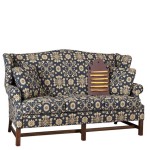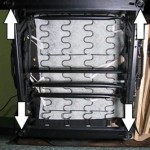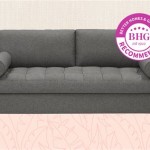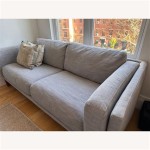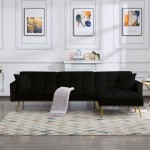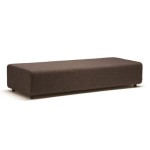Typical Width of Sofa Tables: A Comprehensive Guide
Sofa tables, also often called console tables, are versatile pieces of furniture positioned behind sofas or against walls to provide a surface for décor, lamps, and other items. Their functionality extends beyond mere aesthetics, offering practical storage or display opportunities in living rooms, hallways, and entryways. Understanding the typical widths of sofa tables is crucial for selecting the right piece that complements the existing space and furniture.
Width, in this context, refers to the measurement of the longer side of the table, typically the side that runs parallel to the back of the sofa when placed behind it. It dictates how much surface area the table offers and how well it fits within the intended space. This article will explore the common width ranges of sofa tables, factors influencing width selection, and practical considerations to ensure a harmonious and functional placement.
Common Width Ranges for Sofa Tables
Sofa tables are available in a variety of widths to accommodate different sofa sizes and room dimensions. While custom options exist, several standard width ranges are commonly encountered:
36 to 48 inches: This range represents a shorter sofa table, suitable for smaller sofas or spaces where maximizing floor space is a priority. Tables within this width are often employed in apartments or rooms with limited area. A sofa table of this size may provide sufficient surface area for a lamp, a few decorative items, and perhaps a small tray.
50 to 60 inches: This is a mid-range width, accommodating a wider variety of sofa sizes. Tables in this range can comfortably fit behind a standard three-seater sofa and offer more display and storage space compared to shorter options. This size sofa table is a popular choice for many average-sized living rooms, providing a balance between functionality and space efficiency.
60 to 72 inches: This range is designed for larger sofas or sectional seating arrangements. These wider sofa tables offer ample surface area for multiple lamps, picture frames, and other decorative accents. They can also provide a more substantial visual presence in a larger room, helping to anchor the space and create a cohesive aesthetic.
72 inches and beyond: Sofa tables exceeding 72 inches in width are typically custom-made or intended for very large sofas or entertainment spaces. These provide significant surface area, allowing for extensive display and storage. These larger tables act as a statement piece, enhancing the overall design scheme of a spacious room. They can also effectively divide a large open-plan space, providing a visual barrier and creating distinct zones within the room.
Factors Influencing Sofa Table Width Selection
Choosing the appropriate width for a sofa table relies on several crucial factors: the size of the sofa, the dimensions of the room, the intended use of the table, and aesthetic preferences. Each factor plays a vital role in ensuring the sofa table complements the space and fulfills its intended purpose.
Sofa Size: The most important factor is the width of the sofa. Ideally, the sofa table should be approximately the same width as the sofa or slightly shorter. A table significantly shorter than the sofa can appear disproportionate, while a table substantially longer can overwhelm the space. The general guideline is to aim for a sofa table that is no more than a few inches shorter than the sofa. This ensures a balanced and visually appealing arrangement.
Room Dimensions: The overall size of the room dictates how much space is available for the sofa table. In smaller rooms, opting for a narrower table is crucial to avoid overcrowding. Conversely, in larger rooms, a wider table can help fill the space and create a more balanced look. Consider the flow of traffic and ensure that the sofa table does not impede movement around the room. Measure the available space carefully to determine the maximum width that can be accommodated without sacrificing functionality or creating a cluttered environment.
Intended Use: The intended function of the sofa table also influences the optimal width. If the primary purpose is to hold a lamp and a few decorative items, a narrower table may suffice. However, if the table is intended for use as a serving surface for drinks and snacks, or to house a collection of books or other items, a wider table is necessary. Consider the types of items that will be placed on the table and ensure that the chosen width provides sufficient surface area to accommodate them comfortably.
Aesthetic Preferences: Personal style and design preferences play a significant role in selecting the right sofa table width. Some individuals prefer a minimalist look, opting for a narrower table that blends seamlessly into the background. Others prefer a more substantial statement piece, choosing a wider table that draws attention. Consider the overall aesthetic of the room and select a sofa table width that complements the existing décor and reflects personal taste.
Practical Considerations for Optimal Placement
Even with the proper width determined, several practical considerations are paramount for optimal sofa table placement. These involve ensuring accessibility, maintaining visual harmony, and considering the functionality of adjacent spaces.
Accessibility and Clearance: Ensure that the sofa table does not obstruct walkways or impede access to other areas of the room. Allow sufficient space between the table and other furniture pieces, such as chairs or coffee tables, to facilitate easy movement. A general rule of thumb is to maintain at least 30 inches of clearance between furniture pieces to allow for comfortable passage. Consider the typical traffic patterns in the room and ensure that the sofa table does not create a bottleneck or hinder movement.
Visual Harmony: Pay attention to the visual balance of the room. If the sofa table is placed behind a sofa, ensure that it is not significantly taller or shorter than the back of the sofa. A sofa table that is too tall can block the view and create a sense of imbalance, while a table that is too short can appear insignificant. Aim for a height that is roughly the same as or slightly lower than the sofa back to create a cohesive and visually appealing arrangement. Consider the color and style of the table and choose a width that complements the existing décor and furniture pieces.
Functionality of Adjacent Spaces: Consider the functionality of adjacent spaces when determining the placement and width of the sofa table. If the table is located near a doorway or entryway, ensure that it does not obstruct the flow of traffic or impede access to these areas. If the table is located near a window, ensure that it does not block natural light or obstruct the view. Consider the purpose of the adjacent spaces and choose a sofa table width that complements their functionality and enhances the overall flow of the room.
Material and Style Consistency: The material and style of the sofa table should align with the existing décor to create a cohesive look. A rustic wooden table may complement a farmhouse-style living room, while a sleek metal and glass table may be better suited for a modern space. The width should also complement the material. A bulky, wide table in a delicate material may appear disproportionate, while a narrow table in a heavy material may look unbalanced. Consistency in style and material will enhance the overall aesthetic appeal.
Power Outlet Access: Considering the proximity to power outlets is important, especially if the sofa table will be used to house lamps or other electronic devices. Ensure that there are accessible outlets nearby to avoid the need for unsightly extension cords. If necessary, consider purchasing a sofa table with built-in power outlets or USB ports for added convenience. The width of the table can influence how easily cords can be managed and concealed, so plan accordingly to maintain a clean and organized look.
Selecting the appropriate width for a sofa table requires careful consideration of various factors, including sofa size, room dimensions, intended use, and aesthetic preferences. By taking these factors into account and adhering to practical considerations for placement, individuals can choose a sofa table that complements their space, enhances its functionality, and contributes to a harmonious and visually appealing environment.

Anbazar 63 In Gray Wash Rustic Wood Rectangle Console Table For Entryway Hallway Sofa With 4 Drawers And 1 Bottom Shelf 01516anna E The Home Depot

16 Long Sofa Tables To Go Behind The Couch Chrissy Marie Blog

Anbazar Rustic Entryway Console Table 60 Long Sofa With Two Drawers And Bottom Shelf For Living Room Navy Kz 122 M The Home Depot

Anbazar Espresso Narrow Console Table Sofa With Drawers Wood Entryway And Bottom For Living Room Kz 047 B The Home Depot

8 Space Planning For Living Rooms That Make Everyone Love Them

Diy Truss Console Table Plans Rogue Engineer

Sofa Dimensions A Ultimate Guide With Drawings Homenish Layout Living Room Design Furniture Standard

Sofa Dimensions For 2 3 4 5 6 Person Couches Diagrams Included Home Stratosphere

What Is The Difference Between A Console Table And Side Living Spaces

Benjara Traditional Sofa Table Bm122897 The Home Depot

